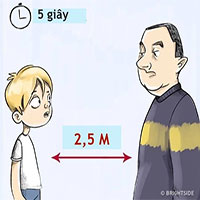The Egyptians were circumcised to distinguish their social class, while the Israelis wanted to be recognized as part of the Israeli nation.
There are many theories regarding the root of the practice of circumcision. Early Western scholars believed that circumcision dates back to ancient Egypt. Today many scholars believe that the origin is further back, to the inhabitants of Southern Arabia and partly to the Africans.
In different regions, different rituals are performed. In parts of Africa, Oceania, Judaism and Islam, the most familiar form is complete circumcision. In ancient Egypt and a few other cultures, only part of the foreskin was removed. In ancient times, circumcision had many symbolic meanings.
In Egypt, this form was usually performed on a juvenile male who was about to begin the priesthood (priest), or an adult male of aristocracy. This is considered a ritual to distinguish social class , depicted on the walls of temples, where men stay for priests to perform circumcision with a knife.

Ancient Egyptian circumcision, carved on the inner wall of the Temple of Khonspekhrod, Egypt, of the eighteenth dynasty, 1360 BC. (Photo: Ancient-origins).
The Israeli significance of recognition of ethnic membership is believed to have had a significant influence on the circumcision rituals of many other religions. Typically young men of the Xhosa and Zulu ethnic groups, their circumcision rituals are more complex. In Israel, a man must be circumcised to be truly recognized as a member of the family. ethnic community. Eight days after the infant is born, this ritual is performed. Adults are circumcised only if they are not Israeli and want to join the Israeli community. Later, when the Israelite religion became ancient Judaism, then Judaism, all men were required to undergo circumcision. Other teachers are not required to do this.
The Xhosa and Zulu men’s bodies are painted with white paint before cutting. In the process, they are isolated from the community for several weeks, especially the women. After being circumcised, they removed the circumcised foreskin in the woods as a childhood symbol left behind, to become men, and then washed off the white body paint in the river.

A scene of a child’s circumcision in Italy is sculpted on the wall. (Photo: Ancient-origins).
Historically circumcision is not limited to Africa and the Middle East. Oceanians and Aboriginal Australians also have this custom. They use seashells as cutting tools. This is both a rite of passage for young men and a test of courage.
During wartime, circumcision was a form of punishment for prisoners. Soldiers captured in battle would be circumcised, especially in the Middle East, East Africa, and South Asia.

Scene of a group of men sitting on the ground near a circumcised boy. (Photo: Ancient-origins).
Today, an estimated one-third of the world’s males are circumcised, common among Muslims and Jews, for religious reasons. It is also popular in the US, taken to prevent health problems. Many major medical organizations in the world do not agree with this practice because of possible risks, violations of human rights… Circumcision was once a rare custom, most cultures outside Africa , Middle East and Oceania initially do not apply. Over the millennia, this custom gradually became a male religious rite, later restricted to the teenage years.

